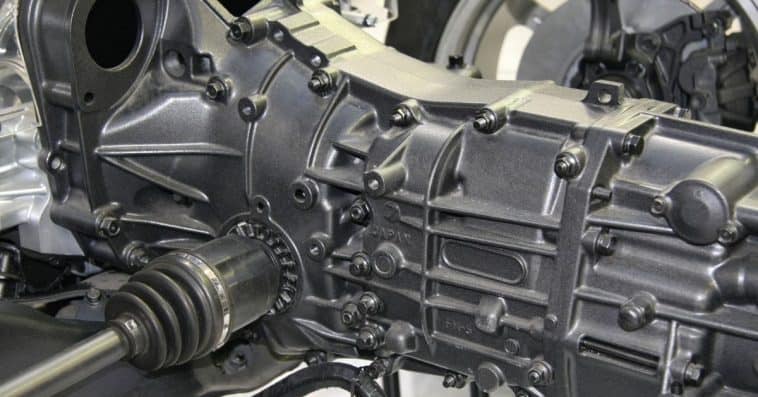
Your vehicle has several efficient systems that make it work the way it does. These systems need to work in collaboration at the same time to ensure the car drives the way you want it to. The transmission control module, or TCM, is an integral part of the communications system. It relays messages between the various systems to identify the different settings your transmission needs to use.
The TCM is also responsible for maintaining a close eye on the car’s transmission to ensure it works as intended at all times. These are two very big responsibilities, which makes TCM one of your engine’s most important components. Your transmission control module should be capable of firing on all engine cylinders while you are driving. This is the only way it can take care of things responsible for keeping your transmission in good shape.
Sometimes, the minor hiccups in a TCM can result in your transmission sustaining damage or running inefficiently. This is why you need to check on the device from time to time to see whether it requires repair or replacement. This guide will walk you through the various signs and symptoms of a faulty transmission control module and the steps you can take to fix it.
Signs Your Transmission Control Module Is Not Working

1. Check Engine Light is Always Lit
The check engine light can be lit for extended periods for a wide variety of reasons. It can also mean that your transmission control module is failing. You would know there is something wrong, particularly if you have trouble shifting gears with the light showing on in the dash.
Other reasons for check engine light in addition to the transmission control module failing, is oxygen sensor failing, poor fuel economy, loose fuel cap, mass airflow sensor failing, catalytic converter failure, ignition coil issues, spark plug failure, issues with aftermarket alarm, bad spark plug wires, and a vacuum leak.
2. Erratic Shifting
Erratic or unpredictable shifting is something you need to watch out for along with the check engine light. This means there is something wrong with your vehicle’s transmission control module. The bad transmission control module can result in unintended and incorrect shifting since a vehicle’s automatic transmission relies solely on the transmission control module.
You may need to visit an auto body shop or a mechanic unless your car has a manual override option. This will be necessary to replace or repair the transmission control module before it can hurt the engine.
3. Trouble with Higher Gears
Your transmission should seamlessly shift into higher gears quickly and efficiently when you gradually increase your car’s speed. This is important to accelerate and drive your car on uphill roads. You will notice that the RPM of your car’s engine keeps increasing instead of subtly changing while making the upshift.
Each gear has a maximum speed within that particular spot. You may be unable to reach the necessary speed in such a case. This can be problematic in certain situations. For instance, if you are driving uphill, you need rapid acceleration to move the car forward. Likewise, on the freeway, you need to be driving at a particular speed to be safe and fast.
4. Issues with Downshifting Gears
Problems with the transmission control module are not limited to upshifts and higher gears. Issues can occur when you are trying to downshift as well. Your vehicle can fail into shifting into a lower gear when you want to pass a slow-moving vehicle and hit the pedal to the floor. The car will try to accelerate without actually accelerating rapidly.
The same problem can occur on uphill roads as well. Your transmission needs to be at a lower speed when you are cruising at high speeds and want to slow down. For instance, the automatic transmission should automatically come to the first gear when your car comes to a complete stop.
A bad transmission control module will not allow your car to stop. It will remain in high gear. This is one of the easiest ways to tell that there is something wrong with your transmission control module. Your car will remain in high gear and won’t stop when you try slowing down.
5. Unable to Change Gears
Your transmission control module is probably beyond repair if the gears are stuck in a particular spot. Usually, the gear doesn’t move forward from the first one in such a situation. The gear can be stuck in neutral as well. This means the transmission will not be upshifting or downshifting, and your car will essentially not move from its spot.
6. Slow Shifting
The transmission control module needs to cycle through several gears at once to be able to change the speeds and gears of your vehicle. This cycle is not as quick or efficient when you have a bad transmission control module. It causes the gears to move too slowly, which can cause poor engine performance and acceleration. Your engine will work at suboptimal capacity, which will eventually take a toll on other parts and components.
Shifting performance may get worse when you are approaching a hill or trying to pull heavy loads. This is another way of knowing that the transmission control module is no longer working the way it is supposed to.
7. Inadequate Fuel Efficiency
Poor fuel mileage and poor fuel economy are common signs of a failing or broken transmission system. Generally, the transmission control module is responsible for poor fuel economy. Automatic transmission engines are designed for smooth and quick gear selection and timing. These are required to provide the most efficient gas mileage and the best possible fuel economy.
Your engine and timing can get affected if you have a transmission control module that is damaged or has gone bad. The engine will have to work harder than usual and will overheat. At the same time, there will be no improvement in performance. This can cause the engine to utilize more fuel than necessary. It is not just expensive on your pockets with frequent tank fills, but also bad for the vehicle.
Replacement and Repair Costs

It costs anywhere between $500 and $900 to replace a transmission control module. Parts for the transmission control module cost from $450 to $700. You should expect to pay labor costs to up to $200. In fact, you should ask your mechanic what their hourly labor rates are by ordering a new TCM online.
A significant portion of the cost is geared at the expense of parts. Replacement and repair costs can vary greatly depending on the car’s make and model as well. Don’t forget to take account of taxes and fees that will get added to the overall cost.
Repairing a transmission control module can be a stellar option and also thrifty in the short term. Generally, repairs are at least a third of the cost of replacement. You should expect to pay somewhere around $300 on average to repair a regular TCM. However, it would be best if you got it repaired by solid and trained mechanics. It can be risky if the TCM is not repaired right. Make sure you have it repaired by someone offering a warranty of sorts.
Also, it may be possible that your local mechanic is unable to repair the TCM properly. They may have to ship it to a non-local location. This could take longer. If you cannot do without your wheels, you should seriously consider getting a replacement instead of wasting time and money on repairs.
Driving with a Faulty TCM

Many people get tempted to drive with a faulty or bad transmission control module after determining the prices. Your car may not be drivable if the transmission control module becomes damaged or fails. The car may get disabled or only have 1 – 2 functioning gears. The car may not deliver the same level of performance as required to drive safely.
The more modern vehicles can enter into “limp mode.” This is when the vehicle identifies as having a bad transmission control module and stops being drivable. The TCM in such a case would require replacing or repairing. Limp mode is an inbuilt security feature in most vehicles. In this case, the car’s computer activates the transmission control unit or the engine to pick up on the car’s fault.
Once the transmission control unit picks up the fault, the limp mode causes certain non-core components to switch off. This can be unimportant things, like electronics and air conditioning. But, the limp mode can also cause the car to go slower. This mode is a direct sign of a faulty TCM. Sometimes, limp mode and check engine light occur simultaneously.
This is usually when there is a problem with the transmission wiring. Low performance and under boost are few other symptoms of limp mode. These are again related to faulty engine sensors and defective engine components. These two signs are usually because of faulty brake system wiring or engine wiring.








